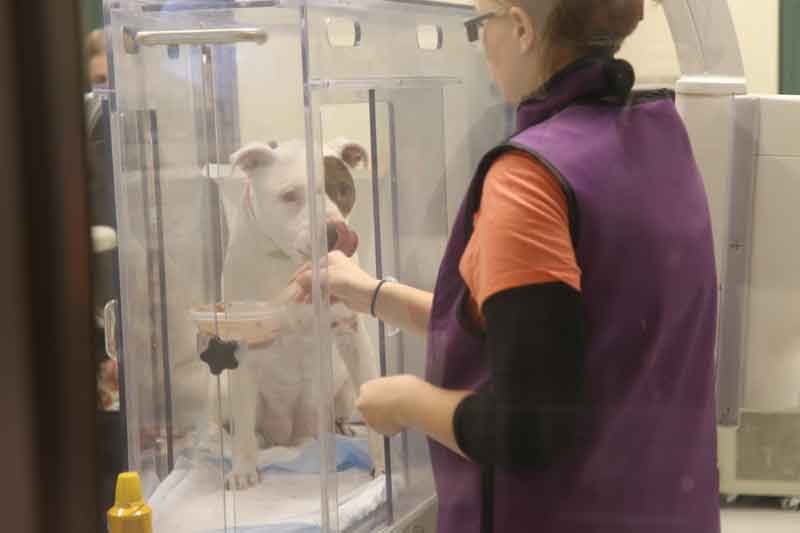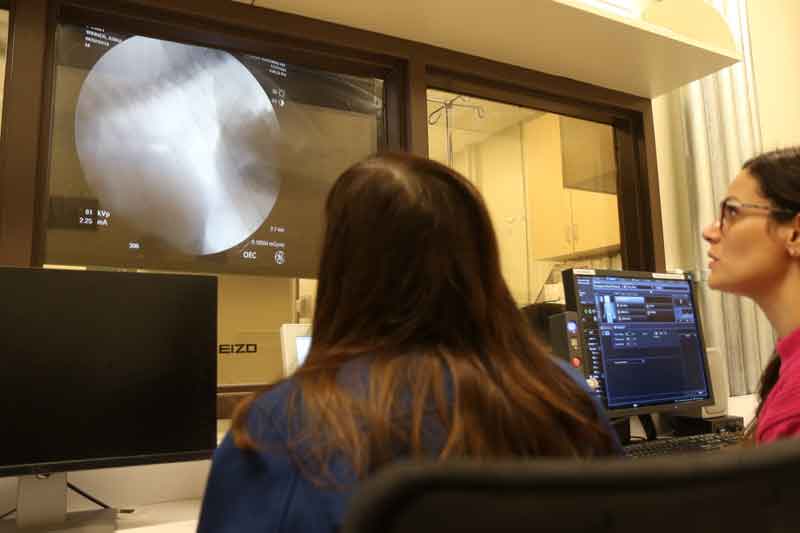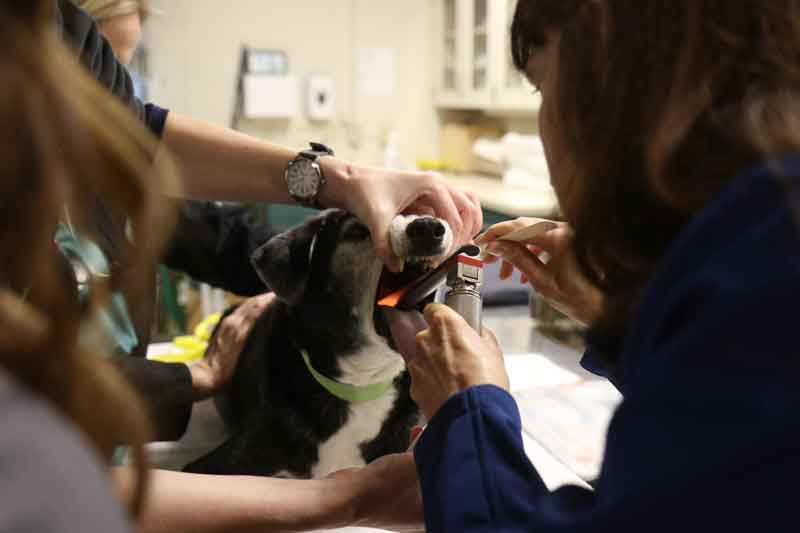
Dogs with respiratory disease may be at higher risk of digestive system abnormalities.
This is according to the University of Missouri (MU) College of Veterinary Medicine (CVM). In a recent study investigating the interplay between disorders in canine respiratory and digestive systems, dogs with respiratory disease were far more likely to have abnormalities, such as accidental breathing of food or fluid into the lungs (i.e. aspiration), gastroesophageal or extraesophageal reflux, and trouble swallowing, as compared to a control group.
The research looked at 45 dogs with respiratory clinical signs that did not have gastrointestinal (GI) signs, along with 15 healthy dogs as a control group. Researchers took video X-ray while each dog was eating and drinking in a natural position (i.e. standing) to look for abnormalities in swallowing or movement of material into or back out of the animal’s stomach.
Seventy-five percent of dogs with respiratory disease, lacking GI signs, were found to have one or more co-existing digestive system abnormalities, indicating dog owners and clinicians should attempt to identify and closely monitor for potential digestive issues in dogs with respiratory disease, even if the animal does not appear to have trouble swallowing and does not regurgitate or vomit.
“Dogs that come into our clinic with signs of respiratory disease, such as coughing or difficulty breathing, may often have issues in their upper aerodigestive tract,” says the study’s lead, Carol Reinero, DVM, PhD, DACVIM (SAIM). “This makes sense because it is in that area where those pathways cross: A healthy dog should breathe in and not swallow or swallow and not breathe in, but when that goes haywire, they can develop disease, including the potential for swallowing too much air or getting food or water into the lungs.”
This link between respiratory and GI disorders—also known as aerodigestive disorders—has been underrecognized for many years, Dr. Reinero says. In 2022, she and Aida Vientós-Plotts, DVM, DACVIM (SAIM), cofounded The BREATHE [Bringing Respiration and Aerodigestion Toward Health] Clinic, a subspeciality clinic within the MSU CVM designed to help patients with both respiratory and aerodigestive disorders.
“When patients come in for evaluation, we ask very specific questions about a pets’ environment, diet, whether or not their cough is associated with eating or drinking, or if their pet drops food when they eat, among others,” Dr. Vientós-Plotts says. “The answers to these questions can help inform our recommendations for additional diagnostic tests that allow us to provide a comprehensive plan for each individual patient.”
Management strategies to help improve quality of life (QoL) for patients may include changes in diet, water alternatives, surgery, or recommendations to gain or lose weight.
Additionally, while aerodigestive disorders are common and can occur in any dog, French bulldogs and other brachycephalic breeds are far more likely to have both respiratory and GI issues than most other breeds, Vientós-Plotts says.
“This is because their respiratory tissues are squashed in a much smaller area, so the holes to bring air in are smaller,” she explains. “As they struggle to breathe, this can cause reflux or herniation of their stomach, and they also tend to get very excited about eating so they may forget to breathe until they are mid-swallow, potentially causing food or liquid to get into their lungs.”
“Videofluoroscopic swallow study abnormalities identify aerodigestive disorders in dogs with respiratory disease versus healthy controls” has been published in Journal of Veterinary Internal Medicine. For more, click here.


